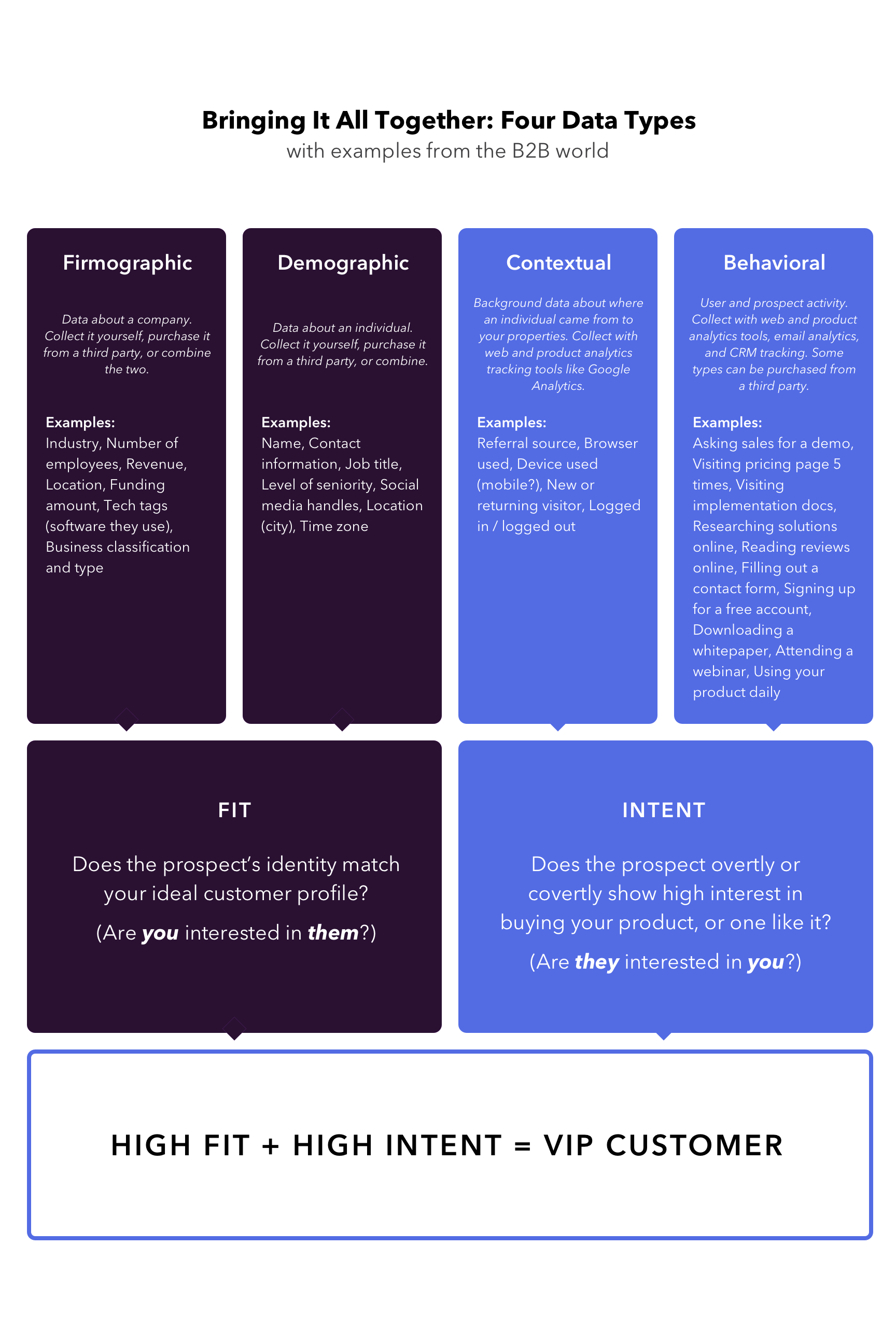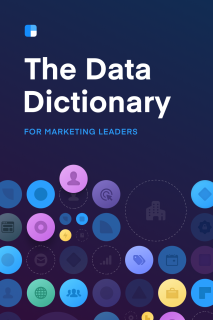Chapter 8
5 minutes
Putting it all together
Alright, marketer friend. Now that you know all about the different types of data, we want to leave you with one last, important message: All the magic is in how you combine data before you reach out to customers.

How to use data without facepalm fails
Marketing often gets a bad rap for being noisy and irrelevant. Think about those spammy emails in your inbox, the vague landing page that is trying to sell you…something?, storms of pop-ups and modals, or persistent ads for a product you already use. It's that twinge when you get an email from a company you're not interested—or qualified—in buying from: "Why are you bothering me? Again?"
This can happen when marketers don't have enough consistent data to do very basic segmentation, personalization, and qualification. But just as often, it's about a lack of access to the data the business might already have. Bad marketers don't take the time to think about customer experience (contributing to the bad rap), while smart marketers might have their hands tied without the ability or resources to combine different data sources and form a coherent picture of the customer.
Look at it from a customer's point of view. That person is one person. But many companies split one person's identity across different databases and teams. For example, different silos or teams at a company tend to own different types of data in various tools:
- Product team: Owns in-app behavioral data
- Sales team: Owns conversation and context about opportunities, enrichment data (third-party demographic/firmographic) in Salesforce, and data from sales reports
- Marketing/demand gen team: Owns website behaviors and intent behaviors like form fills tracked in a CRM and marketing automation
If the company doesn't combine these data sources across teams, then each team will have an incomplete picture of prospect intent and prospect fit.
You need to be one team if you want to speak to your prospects in a way that makes sense to them. Customers don't think about your channels or brand or where they are in the buyer's journey—they just think about their experience and interactions with you, moment to moment.
Here's another way of thinking about it: combining data helps you approximate the social norms of the real world.
For example, if you're at a party, your brain is processing a lot of signals about each person at the party so that you interact with them in a socially appropriate manner. If you see your longtime friend Stan, it would be weird to approach him and introduce yourself as if you've never met. (Although knowing Stan like you do, he's probably already happily tipsy and wouldn't notice.)
But in the same way, it can feel weird for Stan if he's been using a company's product for two years, and then one day he gets a salesy email from them "introducing" the product and asking if he'd like a demo. It's jarring, and enough to drive poor Stan to drink. It happens when marketing teams fail to refer to data about people who aren't net new to their brand (that is, they've been familiar with it for a while). Stan might have downloaded an ebook and gotten pulled into a marketing nurture campaign that failed to consider that he was already a customer in the admin and sales database.
But what if you're at a party and you see someone with whom you've exchanged Twitter DMs but have never met in real life? How would you approach them? Do you introduce yourself at all? Do you hug them like Stan's hugging everyone he meets? It's a dance.
Our brain does this mishmash of calculations for us in social situations, but in the B2B world, marketing and its counterpart teams have to work together to get it right and act as one. Depending on the company, that might mean linking up tools, having cross-functional teams tackle marketing campaigns together, or having one role or team that's responsible for syncing up sales and marketing intelligence.
Let's say that at Clearbit, we host a webinar and 100 people attend. Our sales and marketing teams want to follow up with those attendees in an appropriate way.
The group is made up of a mixture of folks in various stages of the buyer's funnel and they all show different levels of intent. Some might already be customers. Others might come from tiny startups who we can't afford to spend our sales attention on. So we need to combine different data sources to learn who to follow up with and how. We might ask:
- Who attended vs. who registered but didn't attend? [using behavioral/intent data from the webinar platform]
- Who are they really? What company do they work for, and in what position? Is the company a fit? [using firmographic enrichment data in Salesforce]
- How long has the company been an open opportunity? [using sales intent data in Salesforce]
- Who are the net new accounts that fit into your ICP and are showing intent by attending the webinar? [referencing account and opportunity data in Salesforce, firmographic enrichment data, and intent data from webinar platform]
This holistic view lets us make more informed decisions about which companies the sales team should go after, who marketing should nurture with emails and ads, and what the business should say to best resonate with each type of audience member.
It's not always easy to combine data, but if you can do it to achieve even a basic level of thoughtfulness, you'll be way ahead of the game. It shows your prospects that you don't think of them as "just a number." Not only will it not creep them out, it'll stand out in a good way.
Overwhelmed by what to do with all the data you have in your marketing toolbox? Check out the next book in this series. 👇

